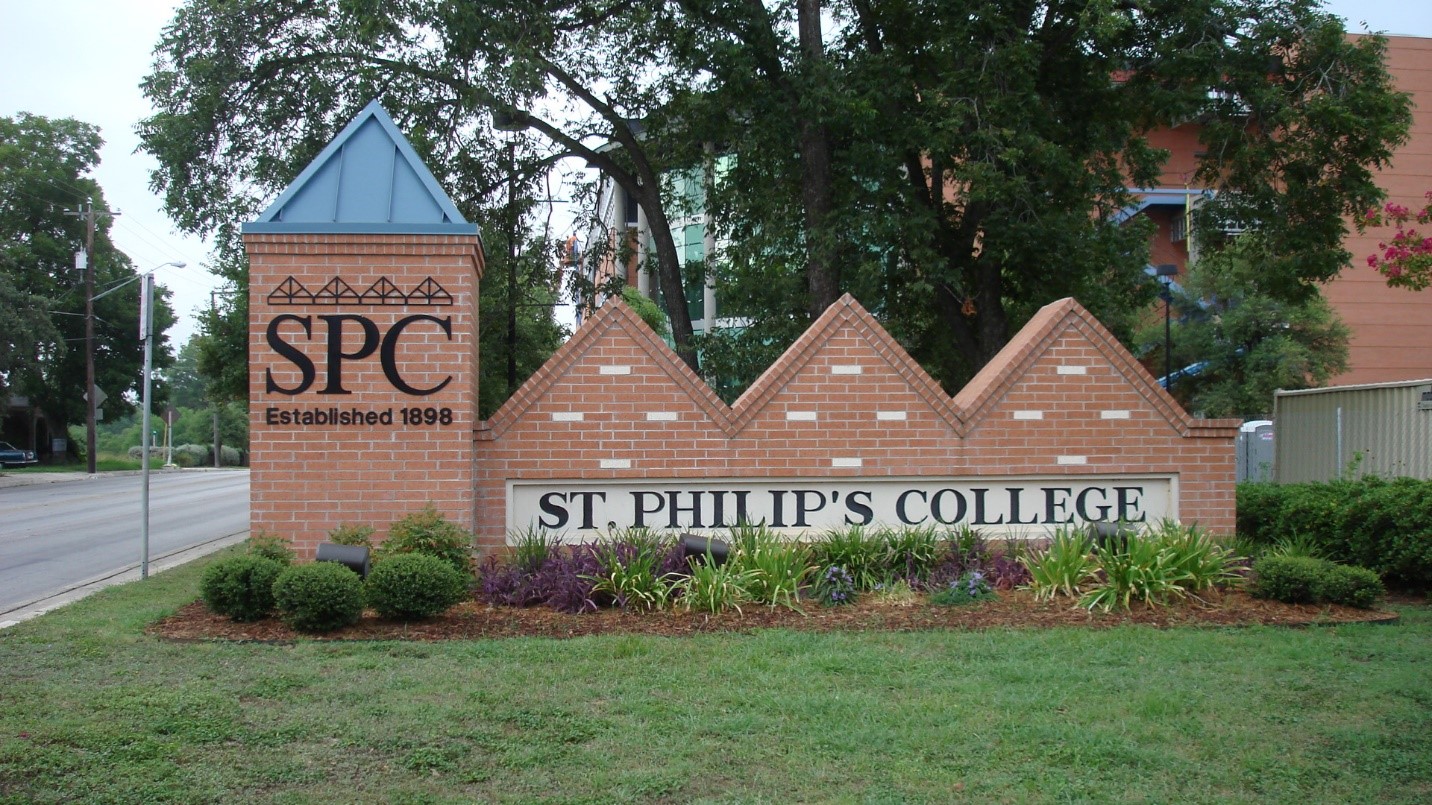St. Philip’s College began as St. Philip’s Normal and Industrial School, in 1898 as an HBCU (Historically Black Colleges and Universities), in San Antonio, Texas, to educate and train newly freed slave girls in a weekend sewing class known as Bowden’s School (Artemisia Bowden, a graduate of St. Augustine’s Normal School now St. Augustine’s University in Raleigh, North Carolina). Its founder, James Steptoe Johnston (June 9, 1843 – November 4, 1924), was an American Confederate veteran from Mississippi and the first bishop of the Diocese of West Texas for the Protestant Episcopal Church.
In 1927, St. Philip’s became a junior college but remained an Episcopal school until 1942 when it was taken over by the San Antonio Independent School District. In 1945, the College was placed under a district board of trustees who replaced the San Antonio School Board as the governing body and was renamed the San Antonio Union Junior College District. Afterward, the African American attorney, Thurgood Marshall, argued Brown vs. Board of Education before the U.S. Supreme Court in 1954 that separate school systems for blacks and whites were unequal and violated the “equal protection clause” of the Fourteenth Amendment to the U.S. Constitution, the following year in 1955, white students were admitted to St. Phillips. It was one of the first community colleges in Texas to desegregate.
Between 1980 and 2010, the rapid increase of the Latino population ignited a new designation of Minority Serving Institutions (MSIs) in Title III’s Strengthening Institutions Program. It was established in 1992 along with Hispanic Serving Institutions (HSIs). This status is based on the formula that at least 25 percent Hispanic and at least 50 percent of the Hispanic student population is lower income.
Today, St. Philip’s College is the U.S.-only College federally designated by the U.S. Department of Education as an HBCU and a Hispanic serving institution (HSI). Its student body is more than 50% Hispanic, 29% white, and 12% African American and it offers Associate degrees and certificates in 26 different fields.
St. Philips is accredited by the Southern Association of Colleges and Schools Commission on Colleges (SACSCOC) with over 12,000 credit students and more than 170 academic and technical disciplines and housed in San Antonio’s historic African American East Side community that is now predominantly Hispanic.
Among St. Philip’s College’s notable graduates are John “Mule” Miles, a professional baseball player with the Chicago American Giants of the Negro leagues; Rolando Gómez, photographer and author; and professors Juan Francisco Salinas, Patrick Costello, and Juan A. Villela, Jr.
Do you find this information helpful? A small donation would help us keep this available to all. Forego a bottle of soda and donate its cost to us for the information you just learned, and feel good about helping to make it available to everyone.
BlackPast.org is a 501(c)(3) non-profit and our EIN is 26-1625373. Your donation is fully tax-deductible.
“As the U.S. Senate Unanimously Resolves National Hispanic Serving Institutions Week with S.RES.639, St. Philip’s College Community Celebrate” https://www.alamo.edu/spc/news-events/news/2018/september/national-hispanic-serving-institutions-week/: Catherine Morris, “St. Philip’s College Embraces Dual Identity,” https://www.diverseeducation.com/students/article/15101101/st-philips-college-embraces-dual-identity: John S. Gray III, “St. Philip’s College,” https://www.tshaonline.org/handbook/entries/st-philips-college.

